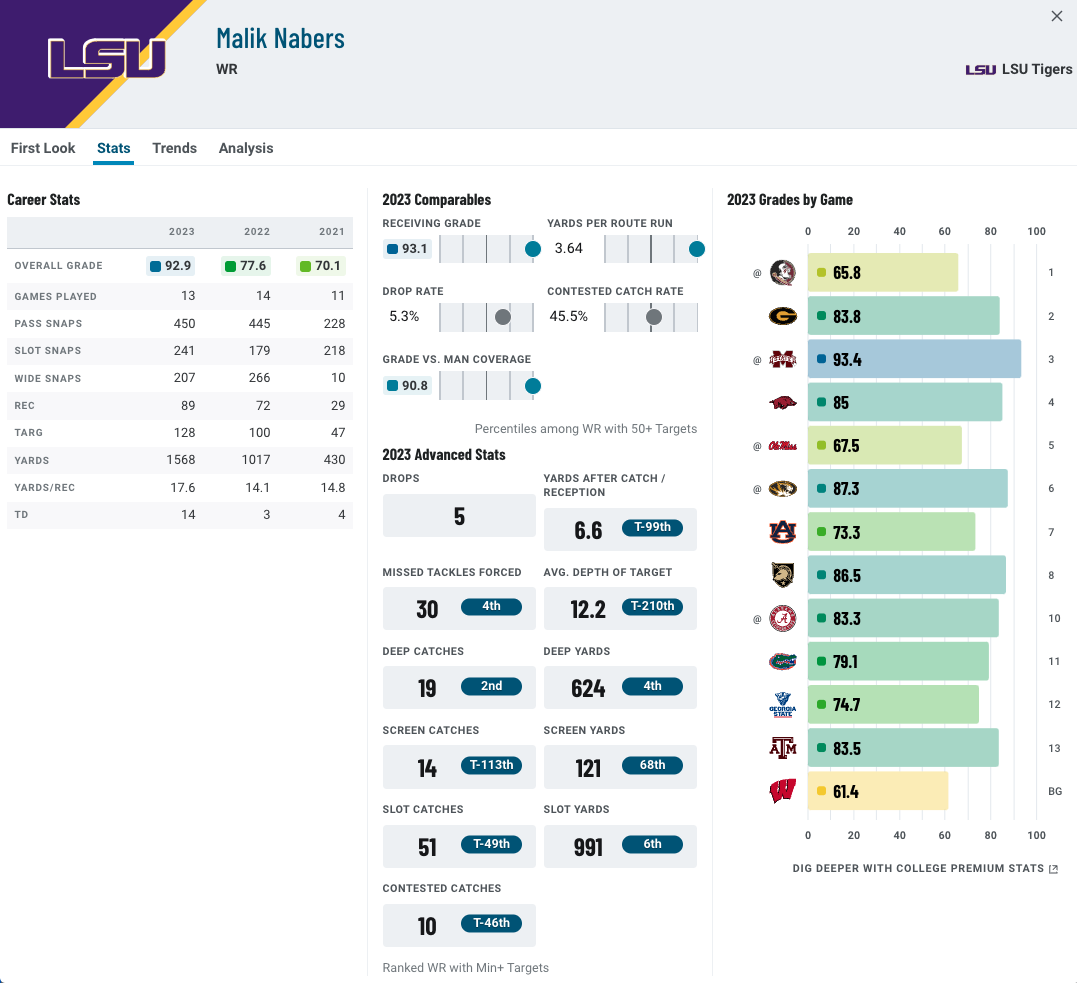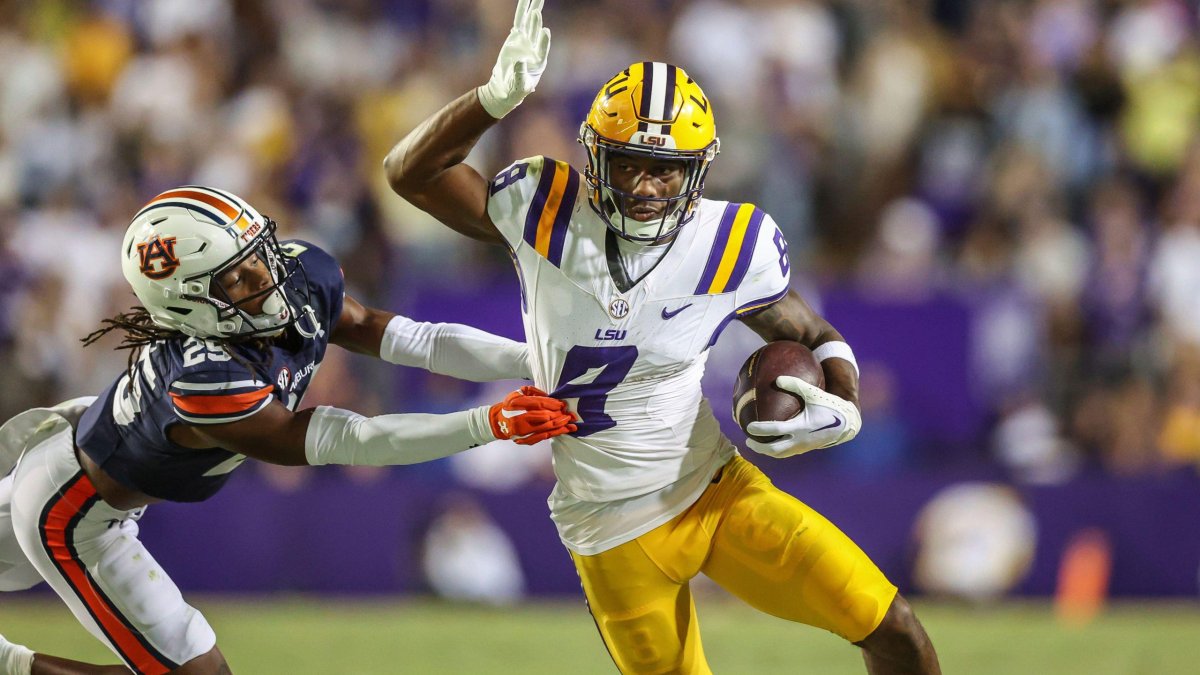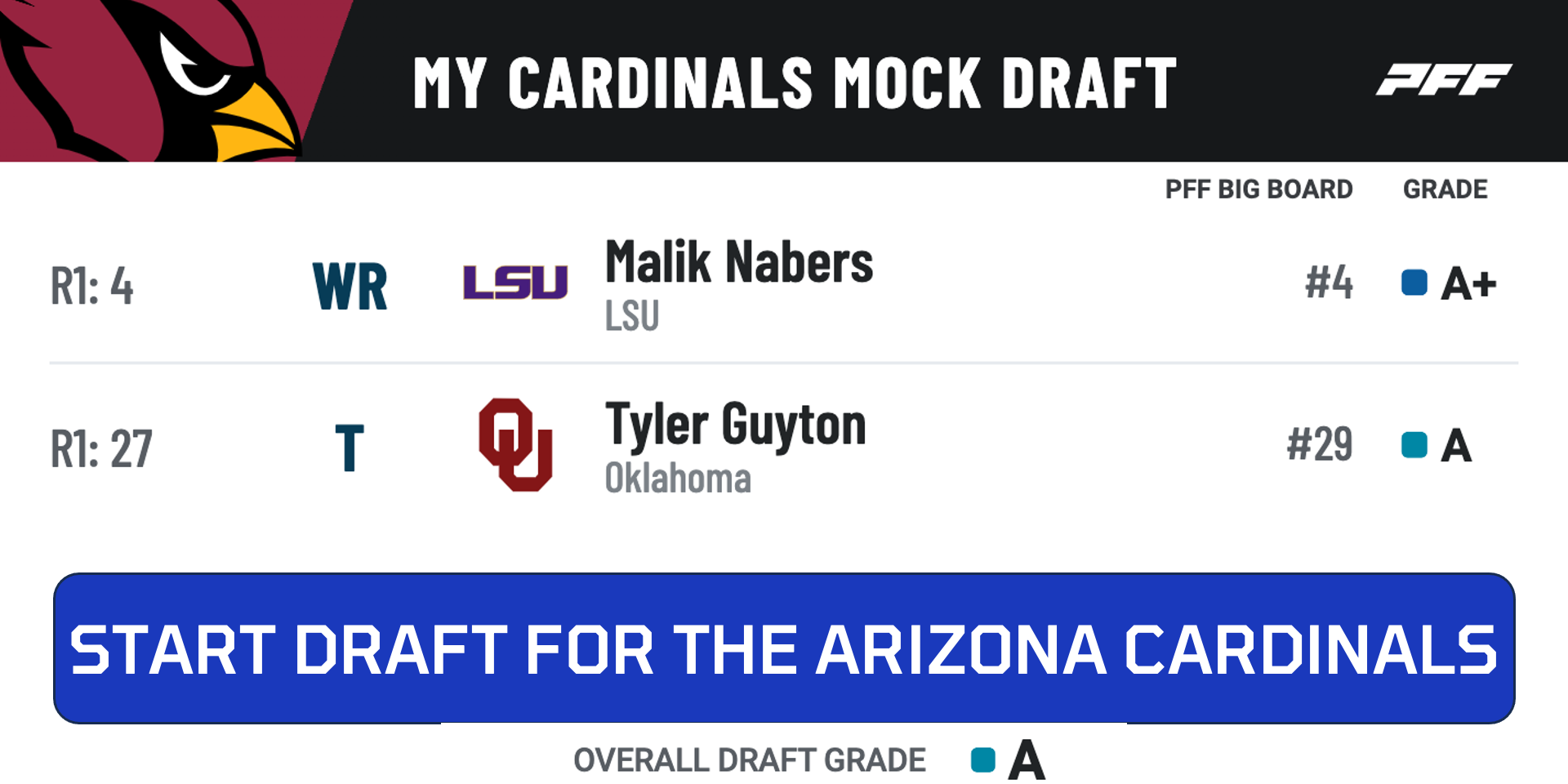The 2024 NFL Draft is fast approaching. The PFF big board is live, mock draft season is in full swing and the 2024 NFL Scouting Combine has wrapped up.
This year's crop of wide receiver prospects showcases some potential NFL stars, with Ohio State star Marvin Harrison Jr. emerging as the standout. Behind Harrison, we have LSU’s Malik Nabers and Washington’s Rome Odunze, who are top-10 prospects in this class.
It’s a good time for NFL teams to need receiver help.
Let's look at LSU‘s Malik Nabers, who just became LSU’s all-time receiving yards leader.
Click here for more draft tools:
2024 Mock Draft Simulator | 2024 Big Board | 2024 Draft Guide
2024 Player Profiles | 2024 Mock Drafts | NCAA Premium Stats
SCOUTING SUMMARY
Watching Nabers' tape, it does not take long to see that he moves differently than even the best in college football. His ability to accelerate while changing direction gives him a very high ceiling as a separation specialist. Though the strength elements of the position are a bit of a concern, his feet are lightning-quick to get off press at the line of scrimmage.
He could stand to be more aggressive at the catch point (fewer body catches), but if that and his catching through contact improve, he has everything else to be a very dangerous NFL receiver.

WINS ABOVE AVERAGE
WAA represents the number of wins a player is worth over an average college football player and is a metric that evaluators can utilize to assess performance. It combines how well a player performed in each facet of play (using PFF grades) and how valuable each facet is to winning football games. The result is a first-of-its-kind metric that allows for cross-positional valuation and predicts future value at the player and team levels.
HOW NABERS RANKS IN THE STABLE METRICS
Receiving grades are relatively stable from year to year, but there is always some level of dependency on quarterback play when evaluating receivers. Isolating receivers against single coverage versus zone is informative, as it shows how much was earned in one-on-one situations compared to more scheme-driven production. Advanced data shows how open receivers are on their targeted routes, and separation percentage is one way to isolate the receiver away from his quarterback.
As far as advanced stats go, yards per route run (YPRR) is one of the best measures of a wide receiver’s production, as it takes into account how well he takes advantage of his opportunities.
Average depth of target (aDOT) and yards after the catch per reception are informative about a receiver’s usage pattern, and his after-the-catch expectations are directly affected by how far down the field he is targeted. Both numbers are as much about style as they are about production.
Compared to other players with PFF college data, Nabers’ metrics in the most predictive of data subsets are among the best in the college game.
Nabers' calling cards are his speed and shiftiness. His 30 forced missed tackles and 303 yards after contact rank among the top six among qualified FBS wide receivers.
Nabers earned the highest grade at the position in 2023 (93.1) as the focal point of one of college football’s most explosive offenses.
NABERS’ PROJECTIONS
Here are Nabers’ rookie-year projections for yards per reception and completion percentage in an offense that likes to push the ball downfield.
Let’s look at how Nabers does in an offense that relies on a quick, underneath passing game.
BOTTOM LINE FROM PFF's 2024 NFL DRAFT GUIDE
Nabers' movement skills are rare, even at the NFL level. His ability to change direction yet continue to accelerate makes him an open-target specialist in the slot and on the outside. His athleticism demands that a defense know where he is at all times as a future WR1.





 © 2025 PFF - all rights reserved.
© 2025 PFF - all rights reserved.